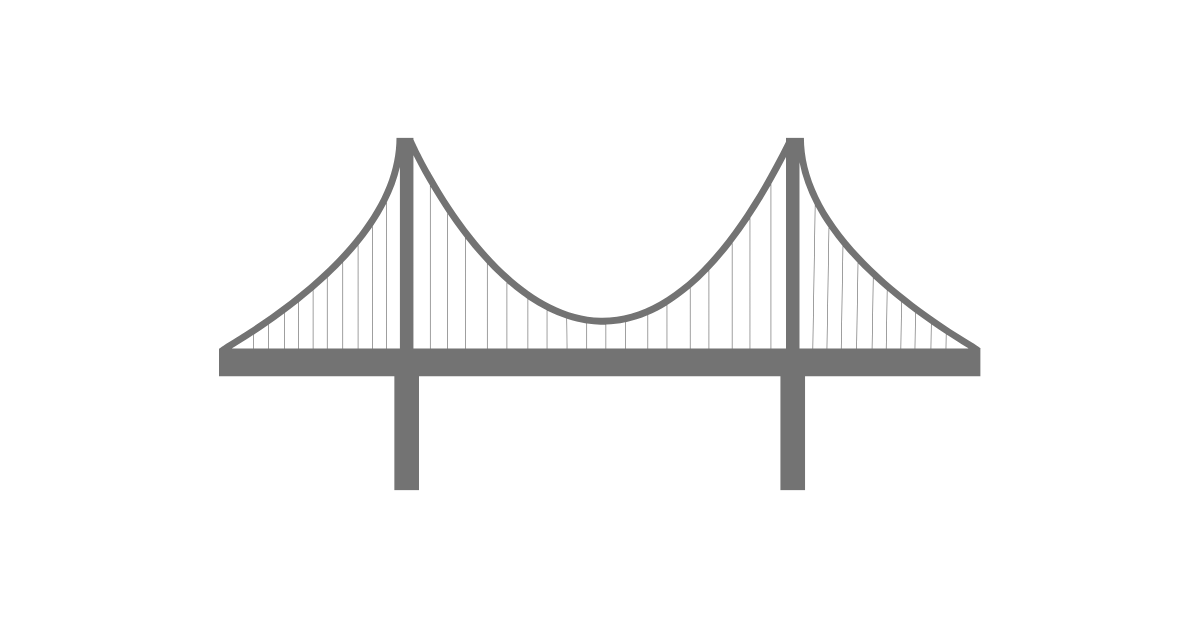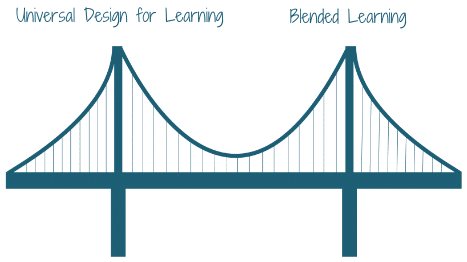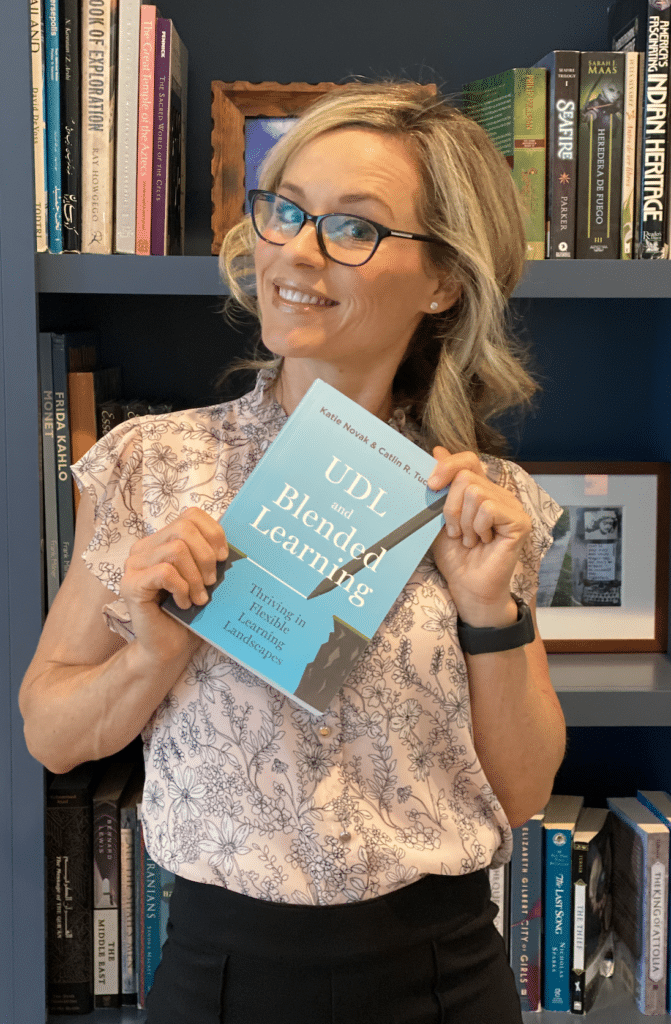There are two things I am certain of in education. First, learner variability is the norm, not the exception. Second, technology is here to stay. So, how do we design and facilitate learning experiences to remove barriers and allow all students to succeed? How can we leverage technology to provide meaningful choices within a learning experience and create the time and space needed to work with individual students or small groups of learners?
In my upcoming book, I teamed up with Dr. Katie Novak to explore the complementary nature of Universal Design for Learning (UDL) and blended learning. Below you will find italicized excerpts from the first chapter of our new book woven into the text below.
UDL is a framework to improve and optimize teaching and learning for all people based on scientific insights into how humans learn.” It celebrates learner variability as an asset in the classroom, and recognizes that every class comprises a wide range of learners with various needs, skills, experiences, knowledge, and interests. Each student will encounter unique barriers, enjoy engaging with information in different formats, thrive in different learning scenarios, have particular preferences, benefit from varying levels of support, and communicate their learning differently.
Every student, regardless of variability, deserves the best opportunity to develop their skills and knowledge regardless of the learning landscape. For too long, schools were designed for those students who were the mythical average learners at the expense of students who had unique needs and challenged teachers to the limits of their commitments, insights, and skills. When we accept that learner variability is the norm, we begin to design with that reality in mind.
However, the events of the last year have made it clear that educational landscapes can shift at any time. In the last 15 months, teachers have been asked to teach in person, online, and various combinations of the two. As soon as teachers got their bearings in one teaching and learning landscape, things shifted. It was an exhausting and often frustrating experience. Moving forward, Katie and I want teachers to have a skill set nimble enough to navigate any teaching and learning landscape.
Education today requires flexibility and agility. We are called to design and deliver curriculum and instruction that engages learners in face-to-face settings, during hybrid instruction, and when learning is remote, and back again. We don’t need two vehicles, or two different sets of skills, to meet the needs of learners in a flexible learning landscape. Instead, we need to develop a skill set that is adaptable enough and flexible enough to travel from the bumpy, cobblestone streets of traditional education to the choppy waters of learning in the cloud.
To meet the needs of diverse learners in flexible landscapes, educators need more than a single framework. UDL provides a foundation that reminds us that the goal of school is to teach students how to become motivated, resourceful, innovative learners, and help them prepare for the lives they want to live. To do this, we have to embrace blended learning so they can seamlessly traverse from in-person, hybrid, online, and back again.
In my previous books, I’ve defined blended learning as the combination of active, engaged learning online with active, engaged learning offline to give learners more control of the time, place, pace, and path of their learning. This definition is grounded in constructivist principles and positions students at the center of learning. This fundamental shift in control from teacher to learners is key to helping us reach those goals of developing more motivated, resourceful, and innovative learners.
In my previous books, I’ve explored what blended learning looks like in action, encouraged leaders and coaches to power up blended learning by building a professional learning infrastructure, and described how teachers can leverage blended learning to partner with students and create more balance in their lives. This book creates a bridge between the UDL framework and blended learning. This bridge will help leaders and teachers understand how to universally design blended learning. We want to universally design to celebrate learner variability, remove barriers, give students agency, and cultivate expert learners. This book highlights how blended learning, in general, and the models, specifically, can make those objectives easier to accomplish!
UDL and Blended Learning: Thriving in Flexible Learning Landscapes is available now! If you want to place a bulk order (10+) for a book study, complete this form.




33 Responses
Is there research to demonstrate how UDL increases ALL learners capacity vs reminiscing some learners capacity?
Hi Sheryl,
I’ll add this question to our list. Katie and I will be recording responses and posting them within the week.
Take care.
Catlin
Will you cover self-paced, mastery learning in UDL
Hi Desiree! Thank you for the question. Katie and I will be recording responses and posting them within the week!
Catlin
I am so excited for your new book to come out! This idea of BlendedUDL that you and Katie are talking about is exactly in line with my beliefs and what I share with others! Is there a way to preorder your book? Thank you!
Hi Jennifer,
I’m very excited about this book too! I’m thrilled educators like you are looking forward to reading it and spreading the word!
It comes out on May 29. There isn’t a pre-order option on Amazon yet. As soon as preorder is an option, I’ll tweet about it 🙂
Take care.
Catlin
What is it called? You two are my dream team and I want to purchase it right away!!
Hi Julie,
The title is UDL and Blended Learning: Thriving in Flexible Learning Landscapes. It should be available on May 29!
I have been doing UDL PDs with Katie through my district. I am so excited for this book to come out soon.
Hi Melissa,
It was such a pleasure to work with Katie on this project! She is phenomenal. So glad you’ve had an opportunity to work with her!
Catlin
Catlin, you mentioned that educator nowadays need to be “adaptable enough and flexible enough to travel from the bumpy, cobblestone streets of traditional education to the choppy waters of learning in the cloud”?
I would really love to hear your experiences in guiding teachers, who struggled to grow from fixed mindset of traditional education to a more open-minded learning ways; teachers who keep their students in the safe-space of one or two preset activities to teacher who constantly allowed themselves to be challenge by the growth potential of their students.
Cheers.
Hi JC,
I write all about this my new book! If you want to do a deep dive into this shift, I would suggest you check it out.
Take care.
Catlin
Good Morning Dr. Tucker
It is my understanding from a contact at Focused Schools that you and Katie Novak are actually working together in schools. Could you give me more information on this Professional Development program or direct me where to go for information? My district is certainly interested in having both of you come in to work with us on UDL & Blended Learning. Please feel free to contact me via my email address with any information you can give me.
Thank you for your time.
Jeff
When is this book being released? What is the Title so I can add it to my watch list? Thank you!
Hi Barbara,
The title is UDL and Blended Learning: Thriving in Flexible Learning Landscapes. It should be available on May 29!
Catloin
Aloha Catlin,
Do you know when it might be available on kindle? I like to keep my favorite books everywhere I go.
Hi Cody,
I am not sure when it will be available on Kindle. That usually happens a month or two after the paperback hits Amazon. I can ask if IMPress has a timeline for that.
Catlin
I am so excited for this book to come out! I am hoping to do a book study and read it with our staff at Longmont High this summer. When will it be available for purchase and how long will it take to come in? Hope you are well Catlin! I miss having you here in St Vrain:)
Hi Anne! The book is titled UDL and Blended Learning: Thriving in Flexible Learning Landscapes and is scheduled to be released May 29th! Each chapter has book study questions that you can use to facilitate a book study with your AMAZING teachers in Longmont.
I miss seeing you all too! I am sure the incredible work you’ve done in the blended learning space has made this crazy year easier to navigate.
Take care.
Catlin
Looking forward for book.
I have two major questions which I often find myself wrestling with in terms of applying blended learning in general.
1. In High School, where the curricular standards are very rigid and specific in a country like India, where I am from, and where a lot of focus is on high school performance in the chosen subjects, how do you enable this transition from teacher led to student led learning conscientiously, when you know that a significant amount of time has to be invested in direct instruction for the building up of content knowledge. And that leaves scarcely any time for student pace, place or path. Also, even if you do find some iota of time, how do you go about designing learning experiences for the varied learners who have mostly taken the subject due to peer pressure or societal expectations and not many out of their own interest?
2. I have always been so blown away by the amazing treasure trove of resources you share and also recently, have come across this idea of Understanding by Design by Jay M and others, I seem to be at the crossroads of which one will have the greatest impact on my learners, given the social demographic I detailed in the aforesaid.
Hi Soham,
There is a tension in education between the pressure to cover content and the desire to allow students to engage in the messy work of learning. My concern when I work with teachers who feel like they need to dedicate large amounts of time in class to direct instruction is that students do not have the time to move from the acquisition of new information or facts to making meaning. I worry that without the time and space to engage with ideas and with each other that much of what is presented will be lost because students are not doing something meaningful with it. I encourage teachers to lean on video and other sources of media that allow students more control over the pace at which they consume and process new information. This will not replace all direct instruction, but it can allow teachers the space to spend less time talking at students and more time working with them. That is where I believe the blended learning models can be incredibly helpful as they create structures teachers can use to shift control to students and create time to work with individuals or small groups to support deep understanding. Ultimately, a student-centered approach may mean you cover less ground in terms of content, but hopefully, the students will have more opportunities to engage with the ideas and information in a meaningful way.
I absolutely love Jay McTighe’s work! I use his books in my graduate courses. I actually mentioned his work on understanding by design in my most recent blog 🙂
Take care.
Catlin
Congratulations on your new book! It sounds exciting and I look forward reading it and to learning new strategies to better support our students.
Angelica
Thank you, Angelica!
Two of my FAVORITES together! WOW!!! Can’t wait to read the book 🙂
Thanks so much for collaborating around these ideas. I am a big fan of you each separately. Can’t wait to see this book!
What are the implications of your approach for acceleration of learning for all students? What does this look like in practice?
Hi Jenni! I’m adding your questions to the Google Form. Katie and I will be recording responses to many of the questions we get and publishing the answers in advance of the book!
Catlin
Congratulations on completing your book. I look forward to reading it. I am curious about how UDL can help different students gain motivation to learn. How can students be motivated to learn when everyone in their network disdains school. How can someone stay motivated when they are learning a subject they have no interest in. Motivation seems to be one of the biggest things I struggle with as a 6th-grade teacher. Thanks for all you do.
Hi Jarret,
When I work with teachers, I stress the importance of partnering with students. Teachers can only present opportunities for students to learn. We cannot make them learn. They must be motivated to learn. That is challenging when they are not excited about the subject or have a social network that isn’t excited about school. I believe the best way to combat low levels of motivation is to 1) articulate the WHY or value of the work they are doing, 2) help students develop their metacognitive muscles (goal setting, monitoring/tracking progress, reflecting on the learning), and 3) give student agency. Katie and I talk about all of these things in the book. UDL emphasizes firm goals and flexible means, which aligns with my focus on student agency in blended learning environments. UDL also seeks to cultivate expert learners, which aligns with my focus on partnering with students and helping them to build their metacognitive muscles. We make these connections in the book, so I hope it will be a useful resource!
There is definitely no silver bullet when it comes to human motivation. I think these things have a powerful impact on motivation over time.
Take care.
Catlin
Perfect answer at the interviews when asked how we can motivate students to learn. Thanks!
This is a great question and one that I found myself asking when I first heard about UDL. One study that did a meta-analysis of literature between 2013 and 2016 found that UDL was an effective teaching methodology for improving the learning process of ALL students. However, the impact on educational outcomes was not demonstrated. Ill continue my research, hopefully Ill find something more conclusive, either way I look forward to Dr.Tuckers response.
When is this going to be out to purchase?
June 3rd 🙂